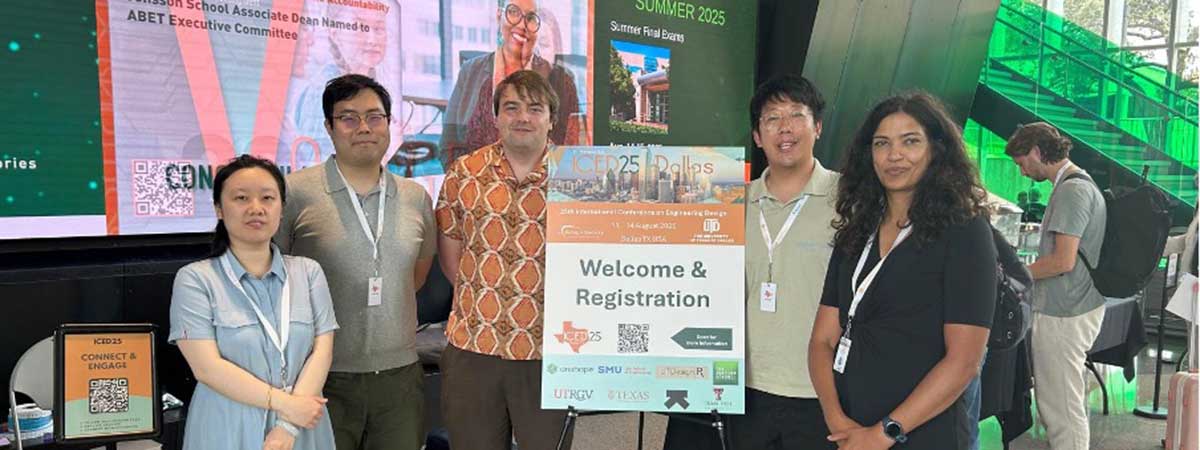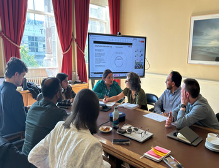Originally posted on 11 December 2022, in Alan Brown’s Digital Economy Dispatches.
There are many important lessons we can take away from studying the digital transformation journeys being pursued by companies today. Perhaps none is more important than the recognition that progress toward a more digital way of working cannot be defined and measured as a linear path from A to B. Rather, it is a much more torturous expedition into unknown territory in search of solutions that may resemble nothing we have seen before. A leap into the dark. How each organization faces this peril offers an important glimpse into their psyche, structure, and culture.
Current AI is Neither Artificial nor Intelligent
This insight is highlighted more than ever when an organization is faced with significant shifts in digital technology. A great example is how it addresses the rising capabilities in Artificial Intelligence (AI). Far from its early roots in science fiction, AI has become a dominant factor in the digital transformation strategies of every organization. Where and how it introduces AI may well determine if it survives the challenges of the next few years.
Often on my travels, the response from organizations to AI is rather disappointing. Despite the high level of opportunities afforded by AI, for most it has been reduced to a much more manageable set of data manipulation activities. Microsoft’s Kate Crawford summarizes this by saying that most AI in use today is “neither artificial nor intelligent”.
In practice, AI is operationalized as an application of statistical analysis tools supported by a growing set of machine learning techniques. Primarily that means mining data to improve how the organization can learn from past experiences, recognize repeating patterns to automate common tasks, and correlate different signals in that data to predict future events. Based on growing access to digitally derived data sources and increased capability in data management, organizations are significantly investing in ways to understand and use the insights they can gain from this.
This narrow perspective on AI is nevertheless very useful. There are wide practical applications of these activities across many aspects of an organization’s service delivery, planning, management, and operations. Whether it is identifying online sales trends, determining optimal machine settings in the factory, or recommending additional purchases to clients, the use of AI has been as essential component of digital strategies for some time.
Yet, wasn’t AI promising to deliver a much more significant disruption than this?
The Great Leap Forward
Let’s step back for a moment. As early as the 1950s, the “Turing Test” was defined by Alan Turing as a major line in the sand for AI. Could we design machines with such intelligence that a human would be unable to distinguish whether the answer to a submitted question received a response from the machine or a real person? Turing was convinced that day would soon arrive.
However, at the time that I was introduced to this concept in the 1980s, realizing that “imitation game” seemed so far from reality as to be absurd. Computers were large collections of electronics that filled basements of specially air-conditioned buildings. Paper tape and punch cards were still in use to feed instructions into these beasts while you waited to receive printed results whenever your job was scheduled to be run later that day. Computers were largely seen as calculation engines focused on relatively mundane number-crunching and record-keeping tasks.
However, it is the leaps in perception of AI and its application that has been most profound. The technological capabilities of the 1980s and 1990s fell far short of the exciting vision painted by Alan Turing and others several decades earlier. The excitement of machines imitating humans had been lost. Disappointing results led to an inevitable lack of funding and a loss of confidence in the future of AI. Without the speed and power of today’s computing infrastructure, AI suffered what some people called an “AI winter”.
Much has changed since then. This continual hardware and software revolution has been underway over many years and seems to know no bounds. Digital technology has advanced beyond all recognition. Today’s computing infrastructure is as unrecognizable from my undergraduate computer science days as a music cassette tape is to my teenage son.
For many people, the first major signal that AI was moving forward came from an unusual source: A US gameshow called “Jeopardy”. Steady advances in digital technology had largely been unnoticed until in 2011 IBM entered its AI technology, codenamed “Watson”, into a very popular quiz show. When it won by answering a set of random questions correctly and better than its human competitors, it became worldwide news. People began to take notice that something was happening in AI that was moving it beyond traditional digitization and into a different realm.
This feeling was reinforced with AlphaGo. For years, applying AI to board games such as chess had been used as one way to estimate the progress of AI. The rules of chess are well-defined and large collections of recorded games can be used to teach AI about strategies that lead to success. Consequently, AI programs have been competing effectively against professional chess players for many years.
The game of Go is different. Played on a 19×19 grid with black and white stones, the rules are much simpler than chess, but there is a much wider set of permutations of different moves and a baffling array of strategies that have been used in the centuries that the game has been played. Many believed that AI would never be capable of beating the best human players. In 2015, AlphaGo proved them wrong by beating a professional Go player for the first time. Subsequently, it became the first to defeat a Go world champion and became arguably the strongest Go player in history.
The reason this shift is significant was not just because it was capable of defeating any human in a complex game. It was because AlphaGo demonstrated creativity in how it played. Rather than mining large collections of existing moves to decide on which one to play, it used techniques to learn from its playing experiences to create its own path forward. Often these were moves a human would never have used but proved to be more effective than conventional human thinking. That was quite shocking to many observers. Machines that think?
The Cat is Out of the Bag
The recent announcement of ChatGPT takes us one step further. On the surface, it may look like many other announcements of a conversational AI tool, designed to enable developers to quickly build and deploy conversational AI agents for chatbots, virtual assistants, and other interactive applications. However, ChatGPT is important because it demonstrates two things.
First, it makes it clear to a wide audience that we have now moved beyond the “Turing Test” set by Alan Turing 70 years ago. Improvements in speech recognition and text-to-speech translation have been on-going for many years. What ChatGPT does is to provide wide access to a simple interface that demonstrates an ability to produce answers that are not only well-constructed and believable but also adopt a human tone. What The Guardian described as the best system “for impersonating humans ever released to the public”.
By submitting questions or describing scenarios, ChatGPT is a “generative pretrained transformer” made to realize Alan Turing’s “imitation game”. It responds with a solution that is both plausible and well-formed by building on its vast knowledge base to create a new set of answers for the user. What seems to astound people is the breadth of its application and the authority of the responses provided. It can understand a wide variety of languages, human and computer programming, and respond with very realistic information.
Second, ChatGPT turns attention away from rote solutions to narrow problem sets with a focus on efficiency and automation toward the promise of a future AI that drives creativity to broaden what is possible. Whether it is a question about business strategy or a request to generate software to implement a response to a defined need, ChatGPT can produce a solution that is new and meaningful. And this level of AI sophistication is now accessible to everyone.
For example, take a domain such as financial services. AI technologies are already widely deployed in areas such as customer service, fraud detection, and rates calculations. However, as Dave Birch points out, the real disruption in financial services will come “not when banks are using AI, but when customers are”. He sees the breakthrough with ChatGPT enabling Individuals and organizations to interact using AI-powered bots acting on our behalf to deal with the boring and the complex activities of our lives. Service delivery is reimagined in a world where bots act on our behalf to support our needs and look out for our best interests.
In this way, ChatGPT is significant. It places an emphasis on new forms of interaction, changes in authority and responsibility in carrying out tasks, and open access to sophisticated creativity and solution generation. In doing so it changes the AI focus for many people and raises their gaze to future possibilities beyond their current strategy horizon. Such a change of attitude is an essential step forward if AI is to realize its disruptive role in business and society.
Every Silver Lining Comes Wrapped in a Cloud
Perhaps just as significantly as the hopes it raises, the announcement of ChatGPT has also reminded us that the advent of AI forces organizations and individuals to address new challenges. From both an operational and ethical standpoint, ChatGPT makes us confront some of our biggest fears about the digital world that is emerging.
Consider, for example, the implications of a sophisticated AI tool that has no concept of right or wrong. Ask it a question and it responds with an answer that is plausible and believable. However, it may also be incomplete, misleading, or simply false. Those already making use of ChatGPT report that its responses are “dangerously creative”. That is, its creativity knows no bounds. It certainly has no limits on whether its answers are true or false.
This can have disturbing results. Cassie Kozyrkov, Chief Decision Scientist at Google, calls ChatGPT “the ultimate bullshitter”. It provides seemingly correct answers to anything and everything. But without a filter on what it says, and incapable of determining what is true and what is not. It is dangerous precisely because it has no interest in ensuring the validity of its responses. It seems only to want to please its audience with an appealing answer.
Furthermore, ChatGPT is widely available at zero cost. This makes it very attractive across many domains. So much so that it has had over one million users sign up in less than a week. Its potential uses appear to be never-ending. But they also bring with them some troubling questions.
Imagine the implications if every student writing an essay can use ChatGPT to generate the text. Every company producing software can deploy ChatGPT to create its code. Every social media channel is clogged with responses created by ChatGPT. And so on. What will this do to many of our knowledge-based professions? What are the implications for intellectual property and liability in a world where we cannot distinguish how information is generated? How will we evaluate the value and validity of AI-generated responses? Will wide availability of AI-generated responses destabilize many of our existing systems? These and many other questions are left hanging in the air.
It is with this in mind that Paul Kedrosky, an economist and MIT fellow, refers to ChatGPT as “a virus that has been released into the wild”. He believes that most organizations are completely unprepared for the impact of ChatGPT. He sees its broad release without restrictions as reckless and has opened a pandora’s box that should not have been opened. With the release of ChatGPT we are now beginning to realize just how much is still to be debated about the future of our digital world.
We are the Robots
The promise of AI has taken another major step forward with the announcement of ChatGPT. Its human-like responses and wide knowledge base have wowed many people. However, its release has more significant implications for an organization’s digital transformation journey: It helps us to reimagine a digital future beyond the confines of our current ways of working. Furthermore, it highlights that this future will only be realized if we face up to the challenges that ChatGPT places in our path. A stark reminder to us all that digital disruption is a double-edged sword.





